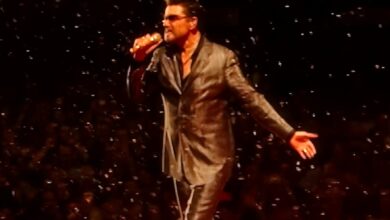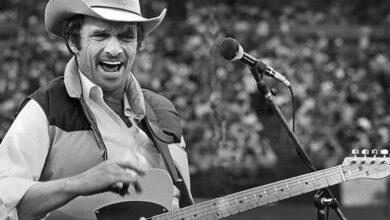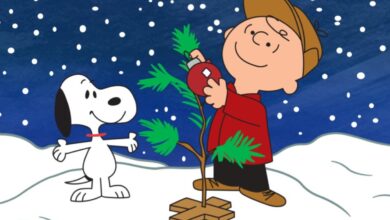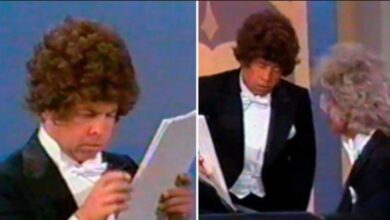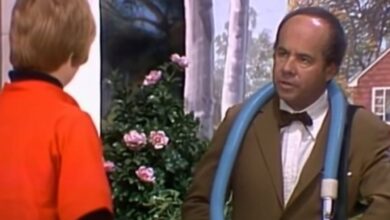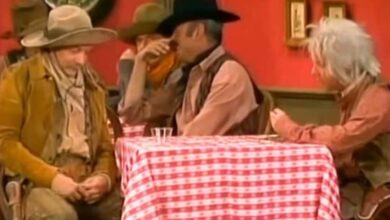KISS Sets The Midnight Special Ablaze: How “Deuce” Transformed Late-Night Television Into Rock Legend and Etched Ace Frehley’s Legacy in Eternity
When The Midnight Special rolled its cameras in 1975, it wasn’t just filling another late-night slot—it was about to introduce America to something it had never seen before. By that point, KISS had all the raw ingredients: the anthems, the firepower, the glittering boots, and the fearless swagger. What they lacked was a televised ignition point. Burbank’s NBC Studios would become their launchpad, and “Deuce” was the fuse. The show’s lights dimmed, and out strode a living explosion—smoke, flashpots, and riffs that cracked through the air like thunder. Viewers rubbing sleep from their eyes were jolted awake as hard rock found its stage under studio lights, declaring itself not just music, but theater with teeth.
The taping on April 1, 1975—ironically no prank—captured four songs that represented KISS in pure form: “Deuce,” “She,” “Black Diamond,” and “C’mon and Love Me.” The producers ultimately chose three to air, but even silent footage could tell the story. The camera choreography, matching every head toss and step sync, made the band appear mechanical in its precision yet wild in spirit. This was energy sculpted for TV, where each pose looked rehearsed even if it wasn’t. The music felt like a force that had outgrown clubs and was now straining against the boundaries of broadcast screens.
By the time “Deuce” finally hit airwaves on July 11, it was less of a performance and more of a detonation. The camerawork captured Paul Stanley’s rhythm strikes like flickers of lightning, Gene Simmons’ bass hammering in perfect time, Peter Criss’ snare slapping like gunfire, and Ace Frehley—the chrome-dusted comet—cutting through it all with melodies that shimmered and hissed. In suburban homes, kids twisted their volume dials until the windows shook. For that moment, America wasn’t watching television—it was riding shotgun in a muscle car fueled by distortion and danger.
“Deuce” succeeded because it played television like an instrument. Each verse and chorus was structured like a film reel—cut, frame, flare, pause. Gene’s stance grounded the chaos while Paul moved like a ringmaster sculpting motion. And Ace, the wild card no one could imitate, brought an unexpected elegance to the noise. His guitar phrasing left pockets of silence that allowed the mix to breathe, proof that restraint could roar louder than excess. On 1970s TV sets with tinny speakers, KISS sounded colossal because they understood space as well as sound.
Behind those flashing lights was an audience too polite for what was happening in front of them. The Midnight Special crowds were seated, well-behaved, but KISS performed as if the ceiling was collapsing. They treated the small NBC stage like Madison Square Garden, playing to ghosts of arenas yet to come. Every cymbal hit carried echoes of the future: pyro smoke, chants rising in hockey rinks, faces painted in devotion. That night wasn’t just a show—it was prophecy, and the world had only seen the first spark.
1975 marked KISS’s year of arrival. With Dressed to Kill fresh on shelves and Alive! waiting just around the corner to cement their legend, this performance became the visual blueprint of their rise. “Deuce” on The Midnight Special was the mission statement—minimal lyrics, maximum punch. The makeup, the flash, the body language—it all screamed defiance and spectacle. Every frame of that performance turned into a cultural artifact, foreshadowing the coming era where image and sound would merge into something unstoppable.
Among fans, the lost track from that taping—“C’mon and Love Me”—has taken on mythic status. Some claim producers thought it was too provocative, others say they simply ran out of airtime. Whatever the truth, the episodes that aired turned KISS into serialized television: “Deuce” and “She” in July, “Black Diamond” in November. Each appearance felt like an episode in an unfolding saga, keeping fans glued to their sets and guaranteeing that the next broadcast would explode bigger than the last.
Musically, “Deuce” was a masterclass in synergy. Paul’s sharp-edged riff carved the path, Gene’s bass followed with locomotive precision, Peter snapped his snare like an electrical jolt, and Ace coated everything in chrome. What stands out in the Midnight Special take is the band’s control under pressure. Television demanded perfection—no redos, no edits—and they delivered. Those perfectly timed breaks and synchronized hits were muscle memory honed by endless nights in smoky clubs. It wasn’t just loud; it was surgical.
For Ace Frehley, this broadcast became his unspoken introduction to mainstream America. Behind the silver makeup and mischievous grin stood one of rock’s most inventive guitarists. His phrasing that night was streetwise yet melodic, each bend gleaming with confidence. He never overplayed; he painted with distortion, crafting solos that felt inevitable rather than indulgent. When he launched into the outro, it wasn’t just a finale—it was a signature, a sound that stamped his identity into rock history.
The Midnight Special’s minimalist production worked in KISS’s favor. Instead of hiding behind fast cuts or canned applause, the cameras lingered. Viewers could watch Gene’s smirk between verses, Peter’s subtle timing pushes, or Ace leaning back as if the laws of gravity didn’t apply. It became study material for aspiring guitarists years later—pause, rewind, replay—every flick of a wrist offering a lesson in controlled chaos. Simplicity, paradoxically, made KISS immortal on screen.
Then came the infamous sidesteps—the synchronized strut critics once called gimmicky. Under the glare of The Midnight Special’s unfiltered lighting, they read as something else entirely: unity. Four men moving in mechanical harmony, balancing precision and rebellion. It wasn’t choreography; it was code—a visual language of domination. Even without sound, you could sense where every downbeat fell. It was kinetic geometry, pure rock algebra, and television had never seen anything that looked this dangerous yet deliberate.
When “Deuce” aired that July night, the timing couldn’t have been better. It dropped KISS into households at the exact moment they were turning concert halls into infernos. The encore broadcast of “Black Diamond” in November served as a reminder—these guys weren’t going anywhere. The two airings built momentum that bled into record sales and tours. Kids picked up guitars, drew logos on schoolbooks, and started their own basement bands. KISS had turned television exposure into a national uprising.
Part of the reason “Deuce” continues to resonate lies in its rhythm section. Peter’s drumming anchors Gene’s bass explorations, giving Ace freedom to decorate instead of dominate. Meanwhile, Paul maintains the gravitational pull, his rhythm guitar gluing every moving part together. Even through the flat frequency of 1970s broadcast audio, the mix feels alive and three-dimensional. It’s as if the song itself refuses to be confined to any medium—it spills over the edges and demands space.
Over time, The Midnight Special appearance became the definitive visual for KISS mythology. The four personas—The Demon, The Starchild, The Catman, and The Spaceman—were no longer gimmicks. Television crystallized them into cultural icons, each serving a distinct musical function. On “Deuce,” the myth and the groove fused seamlessly. Theatrics elevated the music, but the music always came first. That balance turned fantasy into legacy, and the world never looked at hard rock the same way again.
Decades later, when official archives resurfaced the footage online, a new generation saw what their parents had witnessed in 1975. Amid today’s hyper-edited performances, this raw, unfiltered take felt like rebellion all over again. Four musicians, one camera crew, and no safety net—just live electricity. Time hadn’t dulled its spark; if anything, it made it burn brighter. For a brief moment, The Midnight Special wasn’t a relic. It was a reminder that rock and roll never ages—it just waits for you to rediscover it.
In October 2025, Ace Frehley’s death cast a long shadow over the world that loved him. At 74, the Space Ace left behind more than riffs—he left a universe of sound. When fans revisited the Midnight Special performance, “Deuce” felt like prophecy again. That outro solo, fluid and fearless, played now like a farewell we hadn’t yet understood. The silver paint may have faded, but the tone—sharp, shimmering, defiant—still reaches upward, eternal as the stars he embodied. Rest easy, Space Ace.
Fans across the world echoed one sentiment in the aftermath: “Ace is getting into heaven on that outro solo alone.” It wasn’t just poetic—it was truth in amplifier form. That brief stretch of notes, alive with character and mischief, defined him better than any biography could. For every young guitarist who ever stood before a mirror and mimicked his stance, this was the moment that started it all: under NBC lights, a silver grin, and the command to every dreamer watching—watch this.
Freeze the frame on that final chord and you can almost see the future tearing open—Alive! climbing charts, pyrotechnics erupting, the KISS Army multiplying. Yet for all their grandeur to come, The Midnight Special remains the key to decoding it all. “Deuce” is the artifact, the purest sample of what made them matter. A riff that never rusts, a rhythm that never falters, and a solo that still ascends—proof that somewhere out there, the night never really ended.
